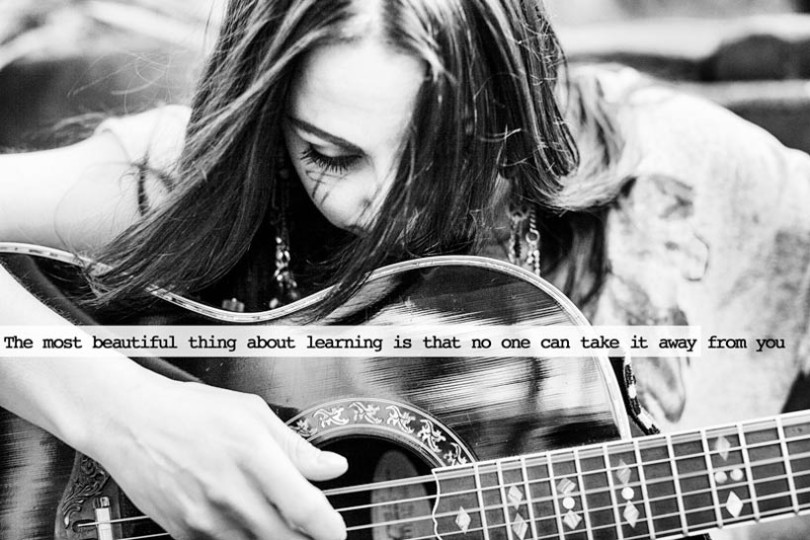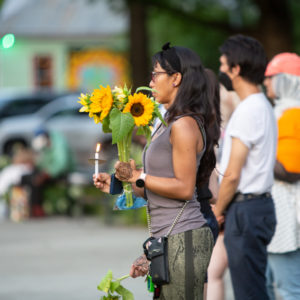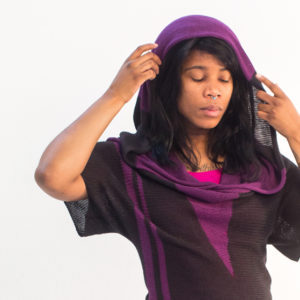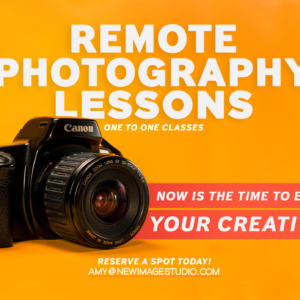Photography Classes Raleigh
All photography enthusiasts, get ready for a fusion of fun and knowledge! Bhanu offers one-to-one photography lessons, camera phone lessons, and lighting courses. All classes and lessons are taught one-to-one and provide interactive instruction to use the camera’s manual mode, so you can confidently create and express yourself through the art of photography. Students gain proficiency by learning the manual camera settings while exploring light and shadow and designing compositions. Advanced students can sign up for more advanced photography lessons such as strobe and speed lighting techniques and advanced photo editing.
A message from Bhanu…
It is fascinating how much I have learned and continue to learn about the world, others, and self through the creative process of photography. Looking at the world through a camera lens provides a curious and compassionate perspective. Photography is the creative outlet that allows us to capture and express our unique views. The ability and opportunity to teach others how to use a camera for self-expression is my passion! Every environment we experience is a canvas…and our cameras are the paintbrush.
Bhanu is passionate about teaching and would love to support you on your learning journey! If you are curious, call the number on this website or send an email to bhanu@newimagestudio.com
Photography Classes and Lessons Raleigh…
Bhanu is currently offering one-to-one photography lessons, photography classes for couples, and photo editing classes. If you are curious to explore, play, and learn please call the studio line directly: 919.307.7639
Photography Classes Raleigh

Smartphone Camera Class
Whether you are tethered to your Android or your iPhone, Smartphones are becoming our “second-halves” and in some cases our “better-halves”….Ha! Smartphones have built-in cameras that are capable of capturing and processing stunning images! Learn how to maximize the potential of your Smartphone’s camera and photo editing applications…
Camera Class Overview: Have you ever wanted to know how to take pictures using your Smartphone and then take your camera phone images and do things like boost the contrast, desaturate, convert to black&white, add textures, etc.? If so, this is the photography class for you!
The first part of this class will:
-Give instruction on how to use the camera on your phone
-Give instruction on how to utilize your phone’s “Gallery” application
The second part of this class will:
-Teach you how to edit your camera phone images to create works of art by using FREE Smartphone photo editing applications.
The ABC’s of your DSLR
This class is perfect for those of you who are beginner photography enthusiasts* -Intimate, hands-on training with the New Image Studio Photographers -Live studio portrait photography with model -Using and understanding the ABC’s (fundamental settings) of your DSLR camera: ISO, f-stop, and shutter speed -Learn how to design compositions
DSLR and Mirrorless – ABC’s Workshop Study Guide:
F-Stop Aperture The number used to describe aperture size. A smaller number is a larger opening. The smaller number results in less light needed to expose the image and less depth of field (less in focus), the smaller number will also result in less depth of field. The widest F-stop your lens opens up to will determine how much you will be able to shoot in low light situations without a flash. So if your lens opens up to F 2 or F2.8 or F4 or F5.6, that will tell you how your lens is. A larger number results in more light needed to expose the image and more depth of field (more in focus). When determining exposure, it is important to realize each full F-Stop equals one full shutter speed setting. Each of the following are full F-Stops: F2.8, F4, F5.6, F8, F11, F16, F22
Shutter Speed Basics Shutter speed controls the amount of time that your digital sensor is exposed to light. The shutter is a small plastic sheet that opens and closes to allow light onto the digital sensor or film plane. The shutter is opened when you press the shutter release button on your camera to take a picture. The shutter speed determines how long the shutter remains open. There are medium format cameras that have the shutter in the lens instead of the camera body, but here I am referring only to DSLR cameras. Cameras will have a variety of shutter speeds often listed- but the following are full shutter speeds that would relate to full F-Stops when determining a proper exposure: 1/500, 1/250, 1/125, 1/60, 1/30, 1/15, 1/8, 1/4, 1/2, 1 second, 2 second and then as you double your exposure it equals another full F- stop. Unless you are trying to do some kind of creative motion blur it is best not to hand hold your camera below 1/60 of a second for 50mm or wider lenses, 1/125 for 135mm lens and 1/250 of a second for a 200mm lens. If you have a zoom lens then go with the longest focal length of the zoom. So, if you have a 70-200. then don’t go below 1/250, unless you are using a tripod or a monopod.
ISO This is the light sensitivity of a digital sensor. The larger the number, the less light that is needed to capture the image. This sensitivity is measured by a formula developed by the International Standard Organization and is abbreviated as ISO. Once you understand shutter speed, F-Stops and ISO, it is time to pull them together to create a properly exposed image. Sometimes the photographer wants to underexpose an image or overexpose it, so everything is a guide which you can then tweak it to create the mood of your image. Proper exposure depends on the intentions of the photographer. Proper exposure is determined with the ISO, shutter speed, and aperture.
You have to determine which of these you need to set first. If you are doing a single portrait and you want the background to blur out of focus by choosing a wide F-Stop then that is fixed decision. if you are shooting with a 50mm lens and you know you can’t hand hold your camera lower than 1/60 shutter speed and you are inside, using window light, at the least ISO so you may have to use a high ISO to get the shot you want. If you are outside with the same situation you will go with a low ISO. Try to use the lowest ISO you can get away with. If there just is not enough light or the light is too flat and dull you may want to use a flash, strobe or tungsten light to create the mood you want.
Photography Classes Raleigh – private photography Lessons, photography workshops. Learn your camera settings
2014 Classes
All photography enthusiasts, get ready for a fusion of fun and knowledge!!…Bhanu Mati is teaching group and individual digital photography classes, digital photography workshops, photo safaris, and private photography lessons! Our digital photography classes, photography workshops, and private digital photography lessons will teach you the knowledge you are seeking. Learn camera settings, design compositions, photograph models and learn about posing, photograph landscapes, work with high-end lighting techniques, and the list goes on! Our studio is conveniently located in the Raleigh, NC area. We are close to the downtown Raleigh area and are two-shakes of a lambs tail from Durham, NC.
Upcoming Photography Classes Raleigh…
Bhanu Mati is currently offering private photography lessons, photography classes for two, and photo editing classes. If you are interested in signing up, please make contact through our Contact page or you may call the studio line directly: 919.307.7NEW
Smartphone Camera Class
Whether you are tethered to your Android or your iPhone, Smartphones are becoming our “second-halves” and in some cases our “better-halves”….Ha! Smartphones have built-in cameras that are capable of capturing and processing stunning images! Learn how to maximize the potential of your Smartphone’s camera and photo editing applications…
Date: June 8th, 2013
Time: 2:00pm-4:30pm
Instructor: Bhanu Mati
Level: Beginner Photography Enthusiast!
Where: New Image Studio
Cost: $75
Seats: 4 people (minimum)
RSVP by: May 18th, 2013
Call: 919.307.7NEW to reserve your seat!
Smartphone Camera Class Overview: Have you ever wanted to know how to take pictures using your Smartphone and then take your camera phone images and do things like boost the contrast, desaturate, convert to black&white, add textures, etc.? If so, this is the photography class for you!
The first part of this class will:
-Give instruction on how to use the camera on your Smartphone
-Give instruction on how to utilize your Smartphone’s “Gallery” application
The second part of this class will:
-Teach you how to edit your camera phone images to create works of art by using FREE Smartphone photo editing applications.
*The photo of the sky (to the left) was taken and processed all on a Smartphone!*
To view more photos taken and edited via Smartphone click HERE
The ABC’s of your DSLR
March 3, 2013 at 1:00pm-3:30pm Level: Beginner Photography Enthusiast Where: New Image Studio Cost: $150 Seats: 4 people (minimum) RSVP by: February 23, 2013 Call: 919.307.7NEW to reserve your seat! Class Overview: *This workshop is perfect for those of you who are beginner photography enthusiasts* -Intimate, hands-on training with the New Image Studio Photographers -Live studio portrait photography with model -Using and understanding the ABC’s (fundamental settings) of your DSLR camera: ISO, f-stop, and shutter speed -Learn how to design compositions -Work with high-end studio lighting DSLR ABC’s Workshop Study Guide: F-Stop Aperture The number used to describe aperture size. A smaller number is a larger opening. The smaller number results in less light needed to expose the image and less depth of field (less in focus), the smaller number will also result in less depth of field. The widest F-stop your lens opens up to will determine how much you will be able to shoot in low light situations without a flash. So if your lens opens up to F 2 or F2.8 or F4 or F5.6, that will tell you how your lens is. A larger number results in more light needed to expose the image and more depth of field (more in focus). When determining exposure, it is important to realize each full F-Stop equals one full shutter speed setting. Each of the following are full F-Stops: F2.8, F4, F5.6, F8, F11, F16, F22 Shutter Speed Basics Shutter speed controls the amount of time that your digital sensor is exposed to light. The shutter is a small plastic sheet that opens and closes to allow light onto the digital sensor or film plane. The shutter is opened when you press the shutter release button on your camera to take a picture. The shutter speed determines how long the shutter remains open. There are medium format cameras that have the shutter in the lens instead of the camera body, but here I am referring only to DSLR cameras. Cameras will have a variety of shutter speeds often listed- but the following are full shutter speeds that would relate to full F-Stops when determining a proper exposure: 1/500, 1/250, 1/125, 1/60, 1/30, 1/15, 1/8, 1/4, 1/2, 1 second, 2 second and then as you double your exposure it equals another full F- stop. Unless you are trying to do some kind of creative motion blur it is best not to hand hold your camera below 1/60 of a second for 50mm or wider lenses, 1/125 for 135mm lens and 1/250 of a second for a 200mm lens. If you have a zoom lens then go with the longest focal length of the zoom. So, if you have a 70-200. then don’t go below 1/250, unless you are using a tripod or a monopod. ISO This is the light sensitivity of a digital sensor. The larger the number, the less light that is needed to capture the image. This sensitivity is measured by a formula developed by the International Standard Organization and is abbreviated as ISO. Once you understand shutter speed, F-Stops and ISO, it is time to pull them together to create a properly exposed image. Sometimes the photographer wants to underexpose an image or overexpose it, so everything is a guide which you can then tweak it to create the mood of your image. Proper exposure depends on the intentions of the photographer. Proper exposure is determined with the ISO, shutter speed, and aperture.  You have to determine which of these you need to set first. If you are doing a single portrait and you want the background to blur out of focus by choosing a wide F-Stop then that is fixed decision. if you are shooting with a 50mm lens and you know you can’t hand hold your camera lower than 1/60 shutter speed and you are inside, using window light, at the least ISO so you may have to use a high ISO to get the shot you want. If you are outside with the same situation you will go with a low ISO. Try to use the lowest ISO you can get away with. If there just is not enough light or the light is too flat and dull you may want to use a flash, strobe or tungsten light to create the mood you want.



